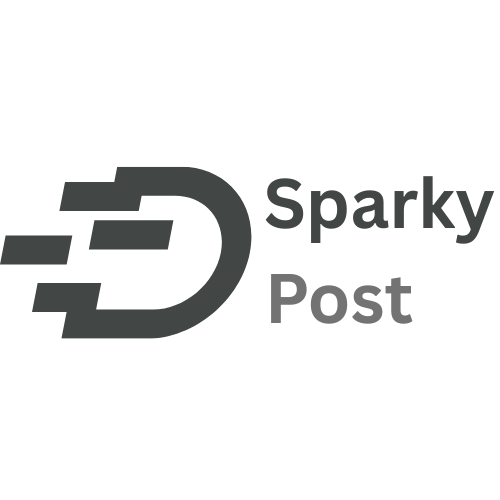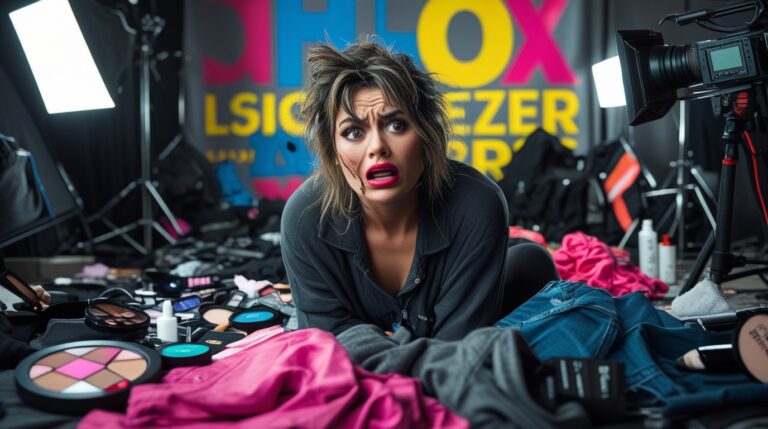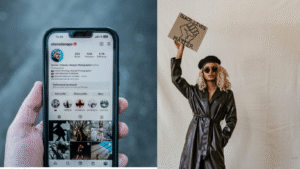Table of Contents
ToggleThe Age of Influencer Culture
In today’s hyper-connected digital landscape, influencers have become central figures in shaping public opinion, consumer trends, and pop culture narratives. These individuals—armed with a smartphone and a strong social media presence—often embody idealized lifestyles that attract millions of followers. They are fitness coaches, fashion experts, vloggers, gamers, and comedians, influencing not just what we buy but also how we think and behave.
Yet, sometimes, this well-curated image breaks down. And when it does, the internet reacts. This is what we call an Influencer Gone Wild moment—when the polished facade crumbles, and a raw, unexpected reality takes over.
From emotional outbursts and livestream meltdowns to unintentional behind-the-scenes moments, these viral episodes remind us that influencers, despite their glamor and following, are human.
What Exactly Is an “Influencer Gone Wild” Moment?
Contrary to what headlines suggest, “gone wild” doesn’t always mean scandalous or reckless behavior. Instead, it often describes any moment when an influencer diverges from their carefully maintained image.
This could mean a livestream where emotions get the better of them, a TikTok post where they clap back at haters, or a spontaneous revelation about mental health struggles. Sometimes it’s more accidental—a camera left on, a private moment made public, or a social media story that reveals more than intended.
To audiences, these moments may look messy. But to many, they feel like a breath of fresh air. Because they’re real.
Why the Internet Reacts So Strongly
The viral nature of these events isn’t just about gossip—it taps into something deeper: our cultural obsession with authenticity. We live in a time where curated perfection dominates social media feeds. So when something unfiltered breaks through the algorithm, it feels electric.
There are a few key reasons these episodes attract so much attention:
- Relatability: Watching someone stumble or get overwhelmed reminds us of ourselves.
- Drama: Viewers love a narrative arc—especially one filled with tension or transformation.
- Viral mechanics: Shock, humor, or emotion tends to get shared more widely.
- Public discourse: These moments open up larger debates on mental health, fame, and accountability.
One moment of vulnerability can trigger a global conversation.
Not All “Wild” Moments Are Created Equal
It’s important to distinguish between harmless human moments and problematic behavior. Not every outburst deserves outrage. Let’s take a closer look at the different kinds of “gone wild” moments and how audiences typically respond:
| Type of Moment | Example Scenario | Common Reaction |
| Emotional Outburst | Crying or venting on livestream | Mixed: empathy or criticism |
| Unfiltered Partying | Drinking or dancing excessively on camera | Often viral, seen as carefree or silly |
| Honest Confession | Talking openly about anxiety or burnout | Mostly supportive |
| Angry Rant | Lashing out at fans or critics | Often leads to backlash |
| Accidental Livestream | Camera left running during a private conversation | Typically goes viral unintentionally |
Each situation reflects different emotional or psychological states, but all stem from the pressures of living under constant public scrutiny.
The Double-Edged Sword of Virality
Going viral isn’t always a victory. While it can lead to more followers, it can also damage credibility or even end careers. The outcome often depends on the influencer’s next move. Do they double down and deny, or do they step back and reflect?
Case Studies: Fallout vs. Forgiveness
Let’s examine two contrasting scenarios that illustrate how differently things can play out.
- Case 1: A wellness creator unexpectedly cried during a livestream while discussing the stress of content creation. Her vulnerability struck a chord with many, resulting in a surge of support and over 3 million new followers within a month.
- Case 2: A popular fashion YouTuber went on an alcohol-fueled rant mocking fans and competitors. Screenshots circulated quickly, leading to a mass unfollow movement and the loss of at least three major sponsorships. Even after a public apology, her reputation never fully recovered.
These examples show that authenticity can heal or harm—depending on how it’s presented and perceived.
Why Viewers Are Drawn to the Unfiltered
We’ve entered an era where realness trumps refinement. Audiences are tired of airbrushed perfection and crave honesty—even if it’s messy. Here’s why that shift is happening:
- Authenticity wins: Polished content is predictable. Spontaneous, honest content sparks curiosity.
- Cultural evolution: Mental health, vulnerability, and imperfection are more accepted now than ever before.
- Emotional connection: Seeing someone go through a hard time humanizes them. It builds stronger bonds between influencer and audience.
- Also Read: https://sparkypost.in/wp-admin/post.php?post=1444&action=edit
How Influencers Can Recover From “Wild” Moments
The fallout isn’t always permanent. In fact, some influencers have turned a crisis into a turning point for their brand. Recovery depends on authenticity, communication, and accountability. Key steps include:
- Acknowledge the moment: Silence is often read as guilt or evasion.
- Be transparent: Share the context and emotional state honestly.
- Apologize when appropriate: But don’t over-apologize or make excuses.
- Create healthier boundaries: Avoid oversharing in the future.
- Let actions speak louder than words: Continue posting valuable, genuine content.
When “Wild” Moments Become Brand Gold
In an ironic twist, some of these raw moments attract brands looking to connect with younger, authenticity-driven audiences. Vulnerability is marketable—especially in beauty, wellness, and lifestyle sectors.
For instance:
- A skincare company launched a campaign with an influencer who’d previously gone viral for crying over her acne struggles.
- A fitness brand collaborated with a creator who went off-script during a live workout and gained popularity for their honesty.
This shows that with the right messaging, wild moments can evolve into powerful stories of growth and resilience.
Conclusion
The internet is a double-edged sword. One slip can destroy a reputation—or build a deeper connection with millions of people. What matters most is how influencers respond when the mask drops.
An Influencer Gone Wild moment isn’t just a glitch in the brand. It’s a reminder that influencers, like everyone else, are human. And in a world that sometimes feels over-edited and overstaged, those very moments may be exactly what we need to stay connected.




